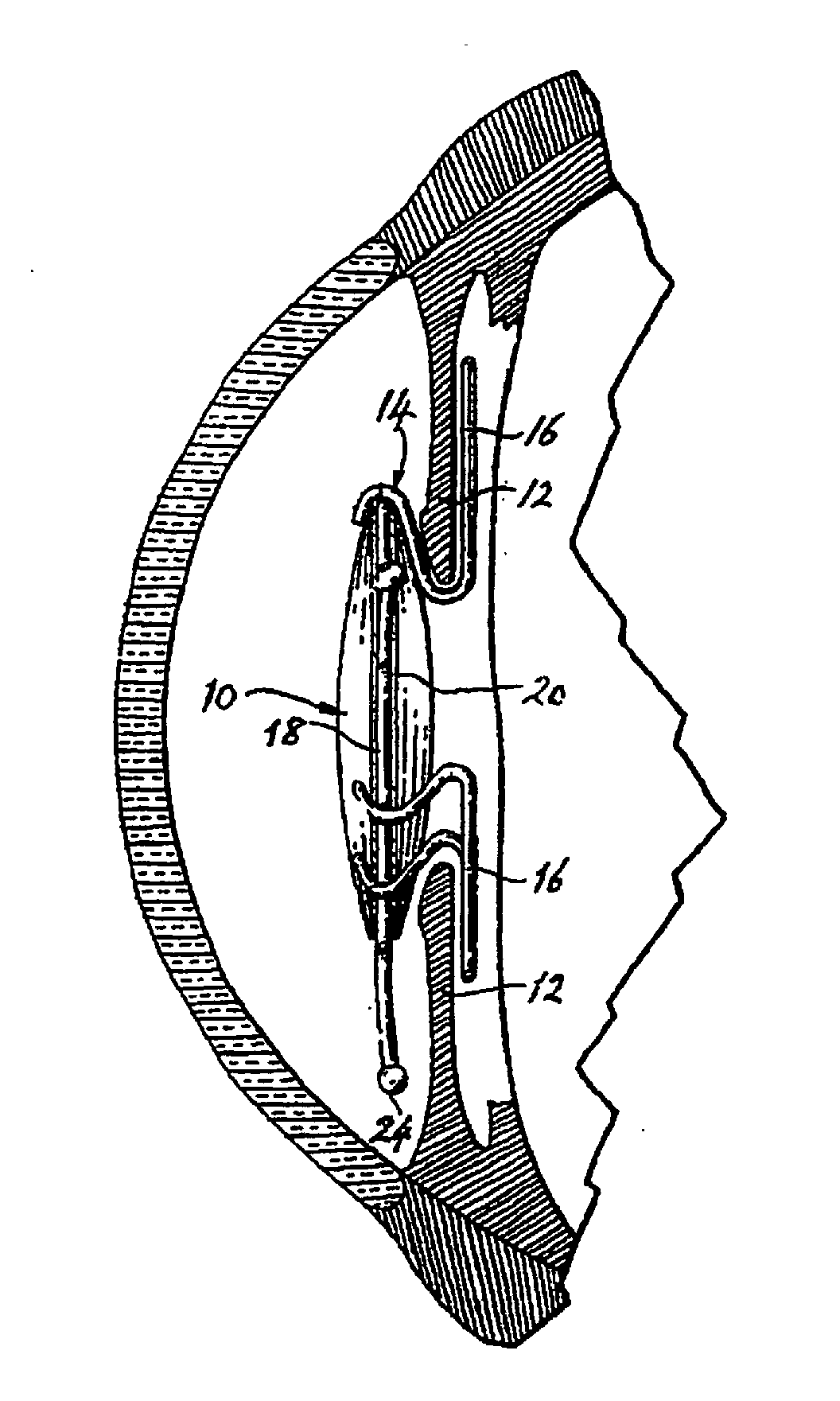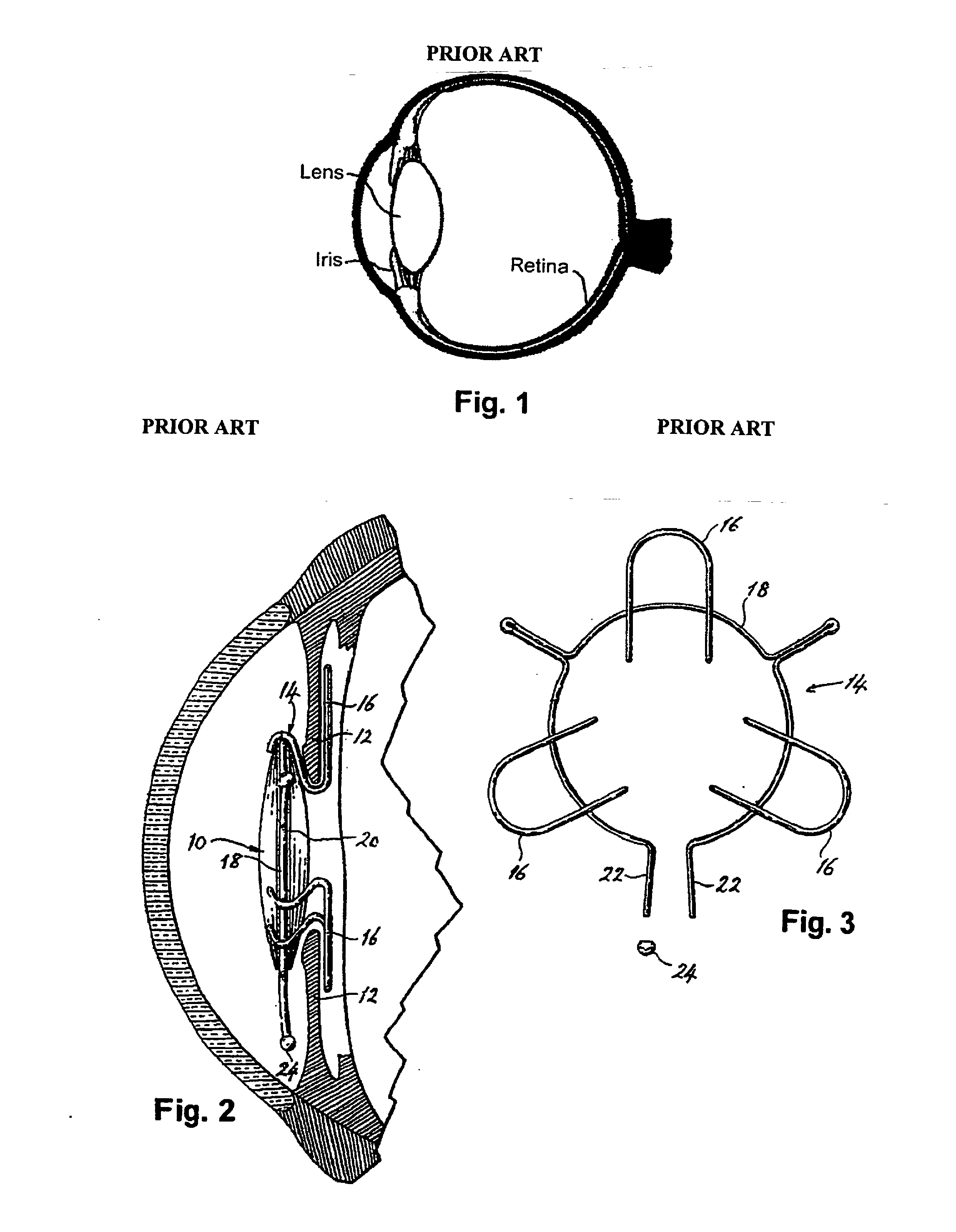Intraocular implant
a technology of intraocular lens and lens, which is applied in the field of intraocular lens, can solve the problems of difficulty in accurately defining the position of the lens in the z-direction, difficulty in accurately defining the optical power required for the artificial lens, and difficulty in accurately defining the optical power.
- Summary
- Abstract
- Description
- Claims
- Application Information
AI Technical Summary
Benefits of technology
Problems solved by technology
Method used
Image
Examples
first embodiment
[0051]In another embodiment of the present invention, the intraocular implant of the first embodiment is not a lens, but a plug or bung. Such an implant is not required to have any optical power, but serves merely to close a fenestration or other aperture in the capsule. An example of this is shown in FIG. 19. Indeed, FIG. 19 shows two examples of different diameter, depending on the size of the fenestration to be closed. It can be seen that this implant is flat and therefore has no optical power. Depending on the position of the fenestration being closed, the plug may also be opaque, partially opaque, translucent or otherwise optically altered from transparent.
[0052]Fenestrations that might be closed off using the plug are, for example, fenestrations introduced into the capsule in order to facilitate the entry of an instrument for evacuating the lens material. In this respect, femtosecond lasers are often used to cut the lens into very small cubes or slices, so that they can be eva...
second embodiment
[0057]A variant of this arrangement is shown in FIGS. 23 and 24, and is based on the Here a pair of oppositely placed lugs 100 is provided as integral extensions to two of the first projections 76 or second projections 78. These engage with holes or voids in the capsule similar to those shown in FIG. 22. In a further variant of this variant arrangement, the lugs are instead each provided between two adjacent projections 76 or 78, as shown by the dotted-line projections 102 in FIG. 24. These projections 102 are therefore dedicated solely to carrying the lugs, whereas in the first arrangement the projections 76 (or 78) act both as protrusions for engagement with the lip of the capsulotomy and as carriers of the lugs for engagement with the capsule.
[0058]Although the lugs shown in FIGS. 20, 21 and 23 are of a length such as to end up approximately flush with the radially outer part of the projecting portion—e.g. flush with the projections 78 in FIG. 23, and similarly in FIG. 21—in pra...
PUM
 Login to View More
Login to View More Abstract
Description
Claims
Application Information
 Login to View More
Login to View More - R&D
- Intellectual Property
- Life Sciences
- Materials
- Tech Scout
- Unparalleled Data Quality
- Higher Quality Content
- 60% Fewer Hallucinations
Browse by: Latest US Patents, China's latest patents, Technical Efficacy Thesaurus, Application Domain, Technology Topic, Popular Technical Reports.
© 2025 PatSnap. All rights reserved.Legal|Privacy policy|Modern Slavery Act Transparency Statement|Sitemap|About US| Contact US: help@patsnap.com



